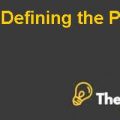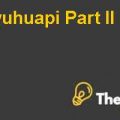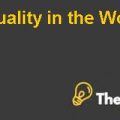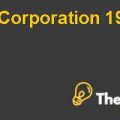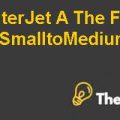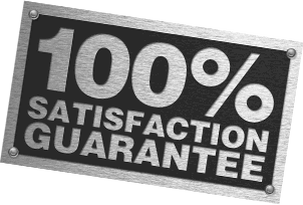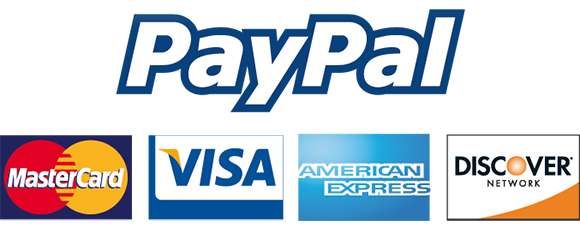Commercial Bank Case Case Study Solution
Earnings:
Net income to total average asset ratio of the company is increased form 0.84% to 1.24% which shows that the company’s total net income is increasing as compared to its net and total average asset ratio. The increase percentage of total net income to total average asset ratio is 47.5.
Interest Income to Average Total Assets ratio has been increased from 3.54% to 3.99%, which shows that the company’s total interest income is increasing as compared to its net and total average asset ratio. The increase percentage of total interest income to total average asset ratio is 12.74.
Interest Expense to Average Total Assets ratio has been increased from 0.29% to 0.45%, which shows that the company’s total interest expense is increasing as compared to its net and total average asset ratio. The increase percentage of total interest expense to total average asset ratio is 52.4, which will affect adversely on the American National Bank.
Non-Interest Income to Average Total Assets ratio has been increased from 0.28% to 0.23%, which shows that the company’s total non-interest income is decreasing as compared to its net and total average asset ratio. The decline percentage of total non-interest income to total average asset ratio is 17.11.
Non-Interest Expense to Average Total Assets ratio has been increased from 2.27% to 2.07%, showing that the company’s total non-interest expense is decreasing as compared to its net and total average asset ratio. The decline in percentage of total non-interest expense to total average asset ratio is 8.52, which will affect adversely to the American National Bank.
Asset Quality:
Asset growth rate is increasing form declining i.e. in 2016 it was 3.6% increasing upt0 10% in 2018. While the average growth rate of the peer group is 5.62%, which shows that the American National Bank is following the positive growth in asset as compared to its peer group, as the American National Bank growth in the year 2008 is 10%, while its peer group asset growth rate is 5.62%.
Capital Adequacy:
Equity growth rate has decreased form 9% in 2016 to 6.82% in 2018. While the average growth rate of the peer group is 6.39%, which shows that the American National Bank is following the negative growth in equity as compared to its peer group, as the American National Bank growth in the year 2008 is 6.82%, while its peer group equity growth rate is 6.39%.
Exhibit 1: Capital Adequacy
| Capital Adequacy | |||||||
| Tier 1 Leverage Capital Ratio | 12.71% | 13.51% | 14.32% | 14.12% | 11.11% | 10.65% | |
| Tier 1 Risk-Based Capital Ratio | 15.23% | 15.32% | 15.87% | 16.62% | 9.13% | ||
| Total Risk-Based Capital Ratio | 16.20% | 16.28% | 16.85% | 17.58% | 8.51% | ||
| Total Equity/Total Assets | 12.62% | 14.27% | 14.34% | 13.93% | 10.39% | ||
| Growth in equity | 9.00% | 7.39% | 6.82% | -24.27% | 6.39% | ||
Exhibit 2: Asset Quality
| Asset Quality | |||||||
| Asset Growth Rate | -3.6% | 6.9% | 10.0% | -375.09% | 5.62% | ||
| Non-current Loans and Leases to Gross Loans and Leases | 0.00% | 0.00% | 0.00% | 0.00% | -100.00% | ||
| Net Credit Losses to Average Total Loans and Leases | 0 | 0.00% | 0.00% | 0.00% | |||
| Loan and Lease Allowance to Total Loans | 0.00% | 0.00% | 0.00% | 0.00% | |||
Exhibit 3: Liquidity
| Liquidity | |||||||
| Net Non-Core Funding Dependence Ratio | |||||||
| Average Net Loans to Average Total Assets | 76.35% | 80.88% | 83.80% | 78.18% | 2.39% | ||
| Average Core Deposit/Average Total Assets | 79.10% | 78.93% | 77.17% | 78.84% | -0.32% | ||
| Net Loans to Total Deposits | 64.02% | 71.36% | 74.28% | 64.60% | 0.90% | ||
Exhibit 4: Sensitivity to Market Risk
| Sensitivity to Market Risk | |||||||
| Net Position Gap 1 year | 19% | ||||||
| Net Position Gap 3 year | 12% | ||||||
Exhibit 5: Earning Records
| Earnings Record | |||||||
| Net Income/Average Total Assets (ROA) | 0.84% | 1.05% | 0.81% | 1.24% | 47.35% | ||
| Interest Income/Average Total Assets | 3.54% | 3.93% | 3.91% | 3.99% | 12.74% | ||
| Interest Expense/Average Total Assets | 0.29% | 0.29% | 0.30% | 0.45% | 52.40% | ||
| Net Interest Margin(Net Int Inc/Av Earning Assets) | 3.53% | 4.07% | 4.22% | 4.00% | 13.31% | ||
| Non-Interest Income/Average Total Assets | 0.28% | 0.25% | 0.24% | 0.23% | -17.11% | ||
| Non-interest Expenses/Average Total Assets | 2.27% | 2.21% | 2.15% | 2.07% | -8.52% | ||
| Provision for Loan Losses/Average Total Assets | 0.14% | 0.09% | 0.07% | 0.00% | -100.00% | ||
| Personnel Expenses/Average Total Assets | 0.00% | 0.00% | 0.00% | 0.00% | #DIV/0! | ||
| Yield on Total Loans & Leases | 4.35% | 4.83% | 4.90% | 5.08% | 16.74% | ||
| Average Earning Assets/Average Total Assets | 91.28% | 91.94% | 91.46% | 89.42% | -2.04% | 94.81% | |
| Return on Equity (ROE) | 6.83% | 8.01% | 6.06% | 8.87% | 29.91% | ||
| Net Profit Margin (NPM) | 21.24% | 24.82% | 19.58% | 29.44% | 38.63% | ||
| Degree of Asset Utilization (AU) | 3.97% | 4.22% | 4.15% | 4.22% | 6.29% | ||
| Equity Multiplier (EM) | 8.16 | 7.45 | 6.99 | 7.08 | -13.29% | ||
| Efficiency ratio | 64.22% | 56.75% | 55.88% | 54.86% | -14.57% | ||
This is just a sample partical work. Please place the order on the website to get your own originally done case solution.

